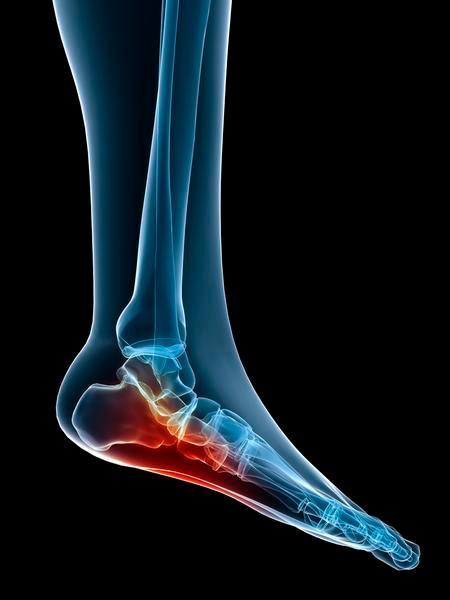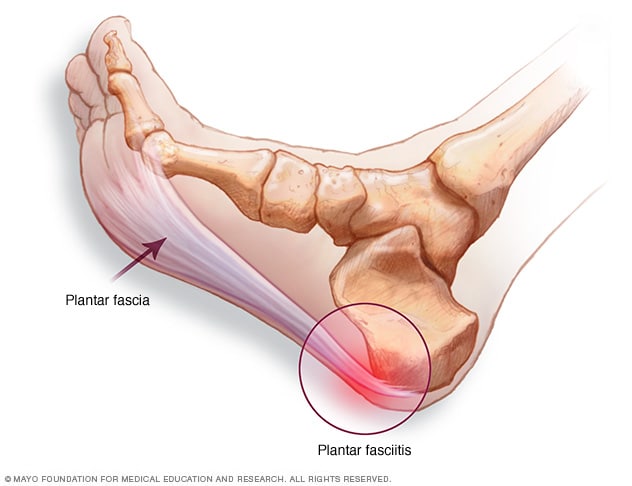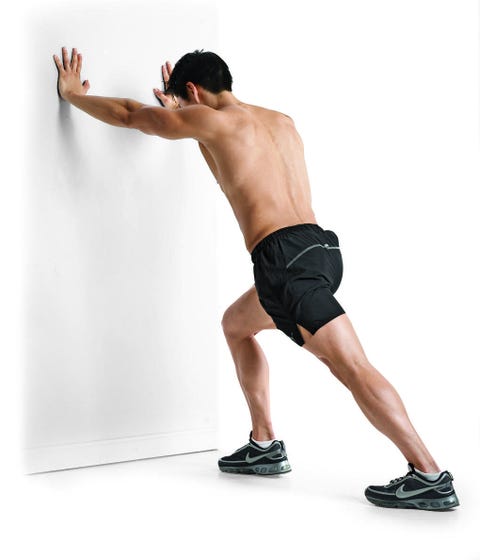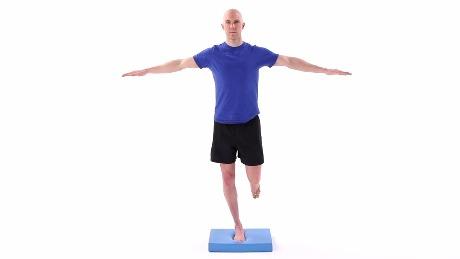Plantar Fasciitis
Posted on September 27th, 2018 by Andries Lodder

By Jennifer Steele
Fascia, or faciitis are not commonly occurring words and the majority of people don’t know what they mean. Unlike muscles, ligaments, tendons and bones the fascia in our body is far less talked about and known. So before we go any further and look at the problems it can cause let’s start by looking at exactly what fascia is, what it does and where it can be found.Fascia
To put it in simple terms, fascia is basically your bodies connective tissue. It is a band or sheet of connective tissue that is primarily made up of collagen fibers. It is responsible for supporting and connecting certain muscles, organs and the body as a unit. A good way to visualize exactly what your fascia is, is to picture an orange. Your skin is the outer orange layer while your fascia is the thick white layer just beneath it. Just as this fascia covers the whole orange so our fascia covers our whole body providing an additional protective layer between the skin and our other soft tissue structures. Basically, it surrounds each organ and muscle, offering protection from outside trauma. Fascia also envelopes and is penetrated by many nerves and blood vessels.Fasciitis
Like with other structures in our body, our fascia layers can become tight, distorted and develop adhesions. When this happens, it can lead to pain, alignment problems, poor and restricted blood flow and compression of certain nerves. This is where the problems come in. When the fascia becomes tight and inflammed due to the distortion or adhesions it leads to fasciitis. I am sure you have all heard of conditions such as Iliotibial band syndrome (ITB syndrome), and Plantar Fasciitis. These are both common conditions caused by tight, distorted fascia layers.Plantar Fasciitis:
 Plantar Fasciitis is one of the most common causes of heel pain. It involves the inflammation of the thick fibrous band that runs along the underside of the foot. This band is the plantar fascia and it connects the heel bone to the toes.
Plantar Fasciitis is one of the most common causes of heel pain. It involves the inflammation of the thick fibrous band that runs along the underside of the foot. This band is the plantar fascia and it connects the heel bone to the toes.
Signs and symptoms
Plantar fasciitis commonly causes a sharp stabbing pain at the heel and it is usually far worse during the first few steps of the morning or following long periods of sitting or standing. The pain is usually worse after prolonged activity as opposed to during the activity. Under normal circumstances the plantar fascia under your foot acts as a shock absorber and supports the arch of your foot. However, if the pressure and impact on the fascia becomes too great, small tears can start to form in it. Repetitive tearing can cause the fascia to become irritated and inflamed which lead to the pain. In simple terms plantar fasciitis is the inflammation of the plantar fascia due to excessive stresses.Risk Factors:
- Age:
- Plantar Fasciitis is most common in men and women aged 40-60 years of age.
- Exercise:
- It is most common in individuals who take part in high impact exercise such as; long distance running, ballet and high impact aerobic dancing can also lead to early an early onset of plantar fasciitis
- Foot mechanics:
- Flat footed or high arched individuals are at a higher risk of developing plantar fasciitis due to the distribution of weight across the foot.
- An individuals running biomechanics, if poor, can also lead to plantar fasciitis.
- Obesity:
- Increased weight places more stress and strain on the feet and so can lead to plantar fasciitis.
- Occupation that involve standing:
- Factory workers, teachers and other individuals that spend the majority of their day standing are also at an increased risk of developing plantar fasciitis.
Treatment
Most people with plantar fasciitis recover with conservative treatment methods.- Rest:
- Stopping the aggravating exercise is step one in the treatment process.
- Ice:
- Icing the inflamed area to relieve pain and swelling
- Physical Therapy:
- Specific stretching and strengthening exercises can be done to strengthen the surrounding muscles and take the pressure off the fascia and allow it to heal.
Here are simple exercises that you can do to help relieve the plantar fasciitis pain:
- Calf Stretch:
- Place hands on wall and one foot in front of the other
- bend the front knee and keeping the back heel on the floor push forward
- Perform the stretch with both a straight knee at the back and then a bent knee
- Hold for 20-30 seconds

- Rolling out fascia
- Using either a hard ball or frozen water bottle
- Place it under the foot and applying light pressure roll the foot backwards and forward
- Do not put all your weight onto the foot
- Roll for a few minutes on both feet to release the plantar fascia

- Towel scrunches
- Seated on a chair with the knees 90 degrees
- Place a towel under the feet
- Using the toes scrunch the towel up pulling it towards the body
- Release and then repeat
- Perform 3 sets of 20 scrunches per foot

- Balancing on an unstable surface
- Standing on an unstable surface such as a Airex mat, foam, pillow
- Balance on on foot with the knees apart and slightly bent
- Ensuring the toes and muscles of the arch of the foot are contracting and the arch is not collapsing inwards
- Perform 3 sets of 60 seconds per leg
 For more information about what cause Plantar Fasciitis and how to treat this painful condition don’t hesitate to contact us for a full assessment.
For more information about what cause Plantar Fasciitis and how to treat this painful condition don’t hesitate to contact us for a full assessment.
Tweet